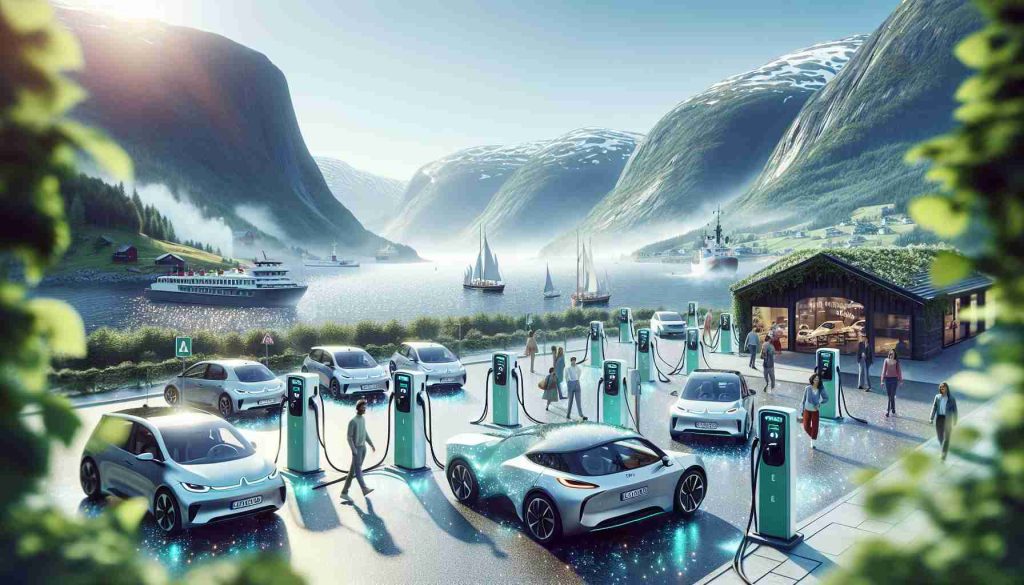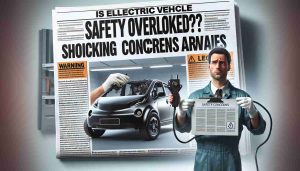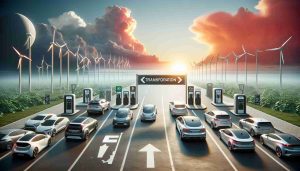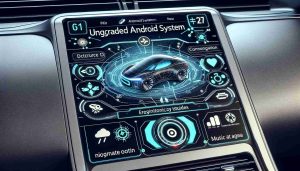Norway’s Electric Vehicle Revolution: A Green Future Awaits
5 min read
A groundbreaking transformation is underway in Norway, where the nation aims to become the global leader in zero-emission vehicles by the close of 2025. This ambitious initiative signifies a monumental shift away from fossil fuel-powered cars, although those currently on the roads will remain for the time being.
With a staggering 88.9% of all new vehicle sales being fully electric in 2024, Norway is inching closer to its ultimate aim of achieving 100%. However, a notable hurdle persists: among the best-selling zero-emission cars, there are few compact non-SUV options, raising questions about accessibility and diversity in the market. As affordability emerges as a crucial factor, research indicates that bridging this gap could be vital for widespread adoption.
Norway’s exceptional progress can be attributed to a combination of policies and robust subsidies, making electric vehicles financially appealing. These incentives have aligned the cost of electric cars with their fossil-fuel counterparts, creating a more conducive environment for consumers to make the eco-friendly switch.
Conversely, other countries, such as the UK and Ireland, face challenges due to limited subsidies and rising costs, which hinder EV adoption. This highlights the need for targeted support and the consideration of smaller, more affordable models to ensure a fair transition for all households.
Embracing smaller vehicles is essential not just for personal mobility, but for achieving climate objectives. As Norway leads the charge, the global community watches closely, potentially learning from its groundbreaking approach to a sustainable automotive future.
The Broader Impact of Norway’s Electrification Initiative
Norway’s quest to dominate the zero-emission vehicle (ZEV) market by 2025 is not just an environmental win, but a harbinger of significant societal changes. The implications of such a transition resonate far beyond national borders, influencing global economies and cultures alike.
For instance, Norway’s ambitious plan could lead to a shift in automotive manufacturing, prompting global automakers to prioritize electric car production over traditional vehicles. As Norway demonstrates the financial viability of ZEVs, this model may encourage manufacturers worldwide to innovate and diversify their offerings, potentially bolstering job creation in clean tech sectors. Furthermore, as consumers in countries with less aggressive EV incentives observe Norway’s successes, they may advocate for reforms that promote similar transitions in their regions.
The environmental ramifications are equally noteworthy. A mass adoption of electric vehicles in Norway could significantly reduce greenhouse gas emissions, supporting global climate goals. However, it also emphasizes the importance of sustainable battery production and responsible sourcing of raw materials, as these processes can have considerable ecological footprints if not managed properly.
As we look ahead, the future of transportation appears poised for upheaval. Trends toward urbanization and shared mobility solutions could accelerate the demand for compact electric vehicles, fostering their integration into public transport systems. Such enhancements will not only improve access but also embody a progressive culture that prioritizes sustainability and interconnectivity.
Ultimately, as Norway propels itself toward becoming a leader in electric mobility, it presents a compelling case study for other nations. The holistic approach to zero-emission vehicles can redefine economic policies, consumer behavior, and environmental stewardship on a global scale.
The Electric Revolution: Can Norway Lead the World Towards Zero Emissions by 2025?
The Shift Towards Zero-Emission Vehicles in Norway
Norway is emerging as a frontrunner in the global initiative to transition to zero-emission vehicles by the end of 2025. With the ambition of becoming a leader in this field, Norway is witnessing a profound transformation in its automotive landscape. The country has already seen an impressive 88.9% of new vehicle sales being fully electric in 2024, underscoring its commitment to a greener future. However, this rapid transition also poses challenges that may affect its long-term goals.
Key Features Driving Norway’s Success
1. Robust Incentives and Policies: Norway’s governmental policies play a pivotal role in the electric vehicle (EV) boom. Attractive subsidies and financial incentives equalize the costs between electric and fossil-fuel vehicles, making electric cars a viable option for a broader population.
2. Rising EV Popularity: With a growing infrastructure of charging stations and awareness campaigns about the environmental benefits of EVs, consumer interest is surging. This is not just limited to luxury cars; there is a need for smaller, more affordable models to attract a diverse demographic.
3. Environmental Goals: The push for zero-emission vehicles aligns tightly with global climate goals, emphasizing the importance of reducing carbon footprints. Transitioning to smaller EVs can greatly contribute to this objective by promoting city-centric, eco-friendly transportation.
Pros and Cons of EV Adoption in Norway
Pros:
– Environmental Impact: Decreased carbon emissions contribute significantly to a healthier planet.
– Economic Incentives: Subsidies and tax exemptions foster consumer adoption and stimulate the economy.
– Innovative Market: The automotive sector is seeing innovations in battery technology and sustainable manufacturing processes.
Cons:
– Limited Model Diversity: The scarcity of compact EV options is a challenge for potential buyers seeking more affordable alternatives.
– Initial Costs: While overall costs have decreased, the higher upfront investment in EVs compared to traditional vehicles remains a barrier for some consumers.
Comparisons with Other Countries
While Norway thrives, other nations such as the UK and Ireland face difficulties due to less generous subsidies and the rising costs of electric vehicles, which stymie EV adoption rates. This emphasizes the necessity for targeted support policies, especially for smaller and cheaper models that could cater to a broader consumer base.
Use Cases for Compact EVs
– Urban Commuting: Compact EVs are ideal for city driving, where maneuverability and space-saving are essential.
– Cost-Effective Solutions: Affordable EVs can serve lower-income households, ensuring the transition to electric mobility is equitable.
The Future of Zero-Emission Vehicles
The movement towards zero-emission vehicles is vital, not only for personal convenience but also for global climate initiatives. Norway’s progression offers a model that other countries may emulate, refining their approaches to achieve sustainable automotive futures.
Sustainability and Innovation in Norway’s Automotive Sector
As the country continues to innovate, new technologies in EV manufacturing and energy sustainability are expected to emerge, further solidifying Norway’s position at the forefront of the zero-emission vehicle revolution. This transformation is not simply a national initiative but a beacon for countries worldwide, showcasing a feasible pathway towards environmental responsibility in transportation.
For further reading on Norway’s environmental policies and electric vehicle initiatives, visit Norway’s official website.



